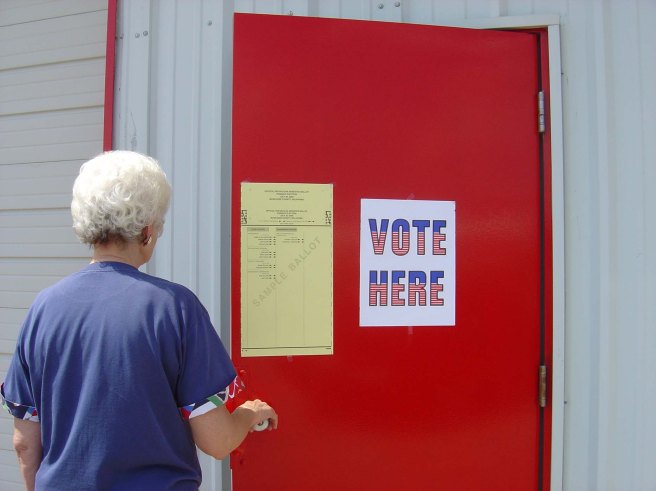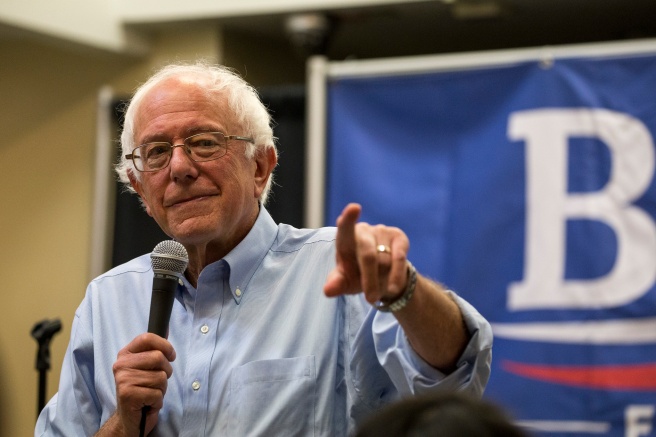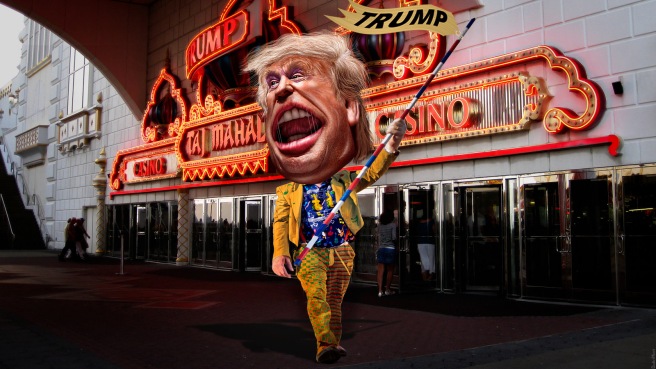My personal education goal for this week was to understand what in god’s name is going on with the primary system in my country. I genuinely had no idea what it’s all about other than the very vague and general notion that this will lead to presidential nominees for the Democratic and Republican parties. The whole process is pretty convoluted so get ready for some bullet lists.
What is the function of the primary system? As stated already, this is all about the Democratic and Republican parties to choosing their nominee. This can be done via two methods: a primary or a caucus, primary being sort of a catch all for both the primary process (think voting via secret ballot) and the caucus process (think old-timey with people arguing and actually milling about a room, directly influencing how other members of the party will vote). I’ll start with the primary process because it is more in keeping with how I normally think voting would work.

Before we get the state primaries, How does the National Convention work?
The candidate is decided at the party’s respective national convention at the end of primary season. Each state has a set number of delegates that it sends to the national convention. That number is set based on that state’s proportion of the total United States population so that larger states get more delegates and therefore more volume to their voice and the opposite is true of smaller states. The number of delegates is not the only factor, however, in the volume of a state’s voice in choosing a candidate. There is also the timing of the state’s primary, with earlier states having wildly outsize influence over the rest of the primary race. Iowa and New Hampshire, for example, collectively only have 53 GOP delegates out of the 2,472 total at the national convention but they are all we’re hearing about because they come first and can therefore launch candidates into the national focus or declare a nationally viable candidate a dog from the outset. The Democrats have 68 delegates from Iowa and New Hampshire in an overall pool of 4,051. For the Democrats, Iowa and New Hampshire make up less than 2% of total delegates. You’d never know that from following the media, would you?
Primary
A primary works the way you probably imagine an election working. People vote secretly for the candidate they like and official results are known once the polls close and votes are counted. Contrast this with a caucus system where the result is not official until after the State Convention. Just hold that for now.
How does it work? Well, of course the Democrats and Republicans couldn’t do it the same way. Read on:
- Democrats – each state’s population votes and sends that state’s delegates to vote at the Democratic Convention based on proportion of votes within the state.
- E.g. If a state had 10 total delegates
- A: 40%
- B. 30%
- C. 30%
- 4 of 10 delegates vote for Candidate A, etc.
- At the Democratic National Convention, whichever Candidate gets more than 50% of the delegates becomes the Nominee. I believe this to be the case, it is shockingly difficult to find details that are seemingly as fundamental and obvious as this. From what I gathered this seems to be correct. Please let me know if I’m wrong.
- Again, each state’s number of delegates is proportionate to its size relative to the whole country.
- E.g. If a state had 10 total delegates
- Republicans. The GOP does things the same way as Democrats except delegates don’t necessarily vote at the convention according to the proportion of votes for their candidate in the state.
- The state could be winner take all in which case whichever candidate has the most votes gets all delegates’ votes for that state. This has some significant repercussions that may not be immediately obvious, namely:
- A winner take all approach incentives potentially disproportionate focus by candidates on these states. A win gets all the votes so why focus on states that divide delegates by vote?
- Disincentives less well-known candidates from showing up. If a candidate doesn’t think he can reach the necessary share of voters to take the whole state, they may ignore it altogether and instead focus on states where they feel they have a hope of getting some delegates.
- As with the the Democratic National Convention, whichever Candidate gets more than 50% of the delegates becomes the Nominee.
- The state could be winner take all in which case whichever candidate has the most votes gets all delegates’ votes for that state. This has some significant repercussions that may not be immediately obvious, namely:
Caucus
How does a primary work. Settle in, this is not the most difficult thing to comprehend but it is more convoluted than a primary system.
- The caucus is the functional unit of the caucus system. It is a gathering in a precinct in the state. Many caucuses occur throughout all the precincts throughout the state.
- At each local caucus typically 50-100 people get together to caucus.
- Each party functions differently with its own unique set of rules and procedures.
- Parties market for different candidates to influence people to caucus, or vote for their candidate.
- Sometimes there is a cutoff, i.e. if a candidate doesn’t get 15% of the caucus vote, then that candidate’s voters must redistribute and pick another candidate. This, of course, makes the process more volatile than a primary model because the polls have a more difficult time capturing who the sub-15% candidate’s supporters will vote for as their second choice candidate. The pollsters have enough trouble with accurately predicting who voters support. Imagine how flawed predictions can be when we’re essentially talking about derivative votes, or ‘if you try to vote for Candidate X and find you can’t, who will you then vote for?’
- Each precinct selects delegates which go to the County Conventions (representing more people). The County Convention gathers all the precinct delegates together which then votes according to how they were chosen at the precinct level in order to pick delegates who go to the District Conventions. The District Conventions picks delegates who go to the State Conventions. State Convention picks final delegates who go onto the National Convention.
- The whole caucus process takes place over many months as the delegates move from local precinct caucuses up to the state convention. The result is not official until it is announced at the State Convention. However, the media focuses on the Precinct Conventions going into the County Conventions.
Why are Iowa and New Hampshire so disproportionately influential?
Because they are the first to choose their delegates and essentially declare the state’s endorsement for a candidate, the donors, the media, and the population consequently look to them for the front runners who then receive more support, potentiating an advancing cycle. On the other hand, the losers are dealt an outsized blow because their new label, especially in comparison to the new “winners”, scares away the population, the donors, and consequently the media.
Now we know how the primary process functions. It’s messy but it makes sense to some degree. There are just so many underlying issues beyond the scope of this quick article that can be exploited to block certain populations from voting or at least make it very difficult. There’s also the obvious issue of unfair manipulation of voters in the case of the caucus that a primary with its secret ballot system obviates.
Sources


